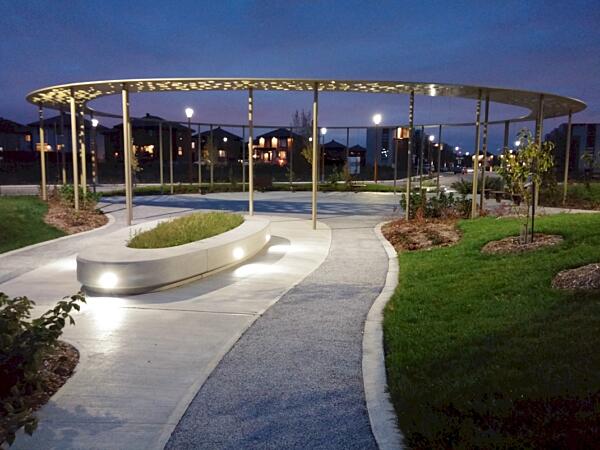Preparing the HDG Surface

Successfully painting over hot-dip galvanized steel is relatively simple. Just like painting on any other surface, proper surface preparation is key to creating an effective bond between the paint and the galvanized surface. Galvanized steel requires slightly different preparation steps according to the surface condition. Thus, proper preparation relies on correctly identifying the galvanized surface condition, and then following the appropriate cleaning and profiling steps to achieve optimum bonding of the paint to the hot-dip galvanized steel.
The different surface conditions have to do with the development of the zinc patina (weathering/passivation). As the HDG surface weathers, different compounds are on the surface which require different cleaning/profiling steps. It is important for the galvanizer to KNOW you intend to duplex - so he can avoid post-treatments that can hinder the bond of the top coating to the galvanized surface.
Steps to a Successful Duplex System
Communication between the fabricator, specifier, painter, and galvanizer is vital before galvanizing. The various parties may desire special handling or require alterations to the design to facilitate the galvanizing process and/or the application of paint. Furthermore, if the galvanizer is aware the part will be painted after galvanizing; precautions can be taken to avoid any processes that may interfere with the adhesion of the paint system.
Many galvanizing facilities either immerse the part in a water-quench or passivation bath to cool the parts to facilitate quick handling as well as prevent the formation of wet storage stain. The passivation prevents the formation of excessive zinc compounds, but also interferes with paint adhesion and can lead to paint peeling.
The following table provides a look into the steps for successfully painting or powder coating over hot-dip galvanized steel:
| Paint Over HDG | Powder Coat Over HDG |
|---|---|
| Communicate with galvanizer/painter | Communicate with galvanizer/painter |
| Identify the surface condition | Identify the surface condition |
| Smooth, clean the surface | Smooth, clean the surface |
| Profile the surface | Profile the surface |
| Paint | Bake |
| Powder coat | |
| Cure the coating |